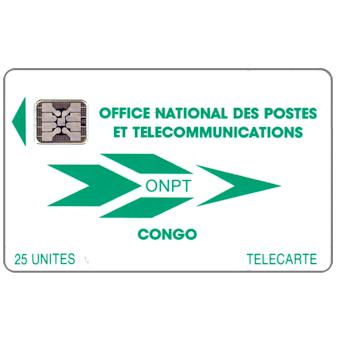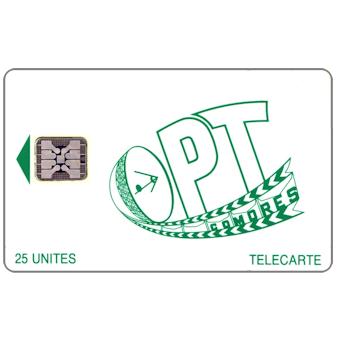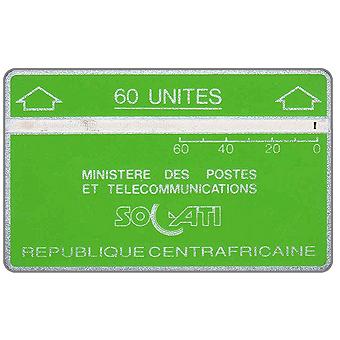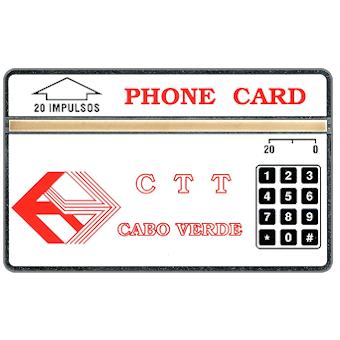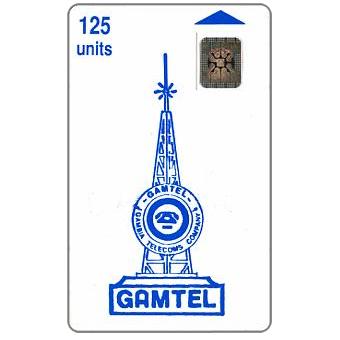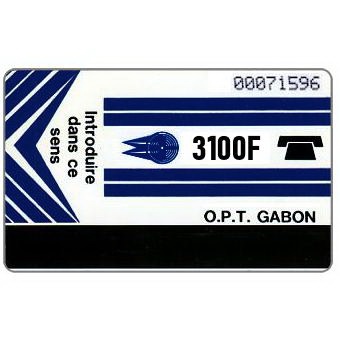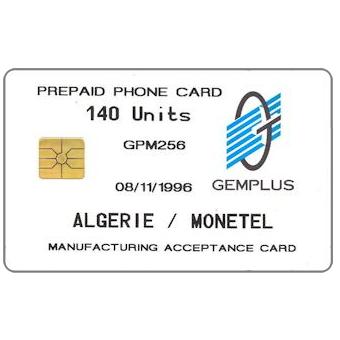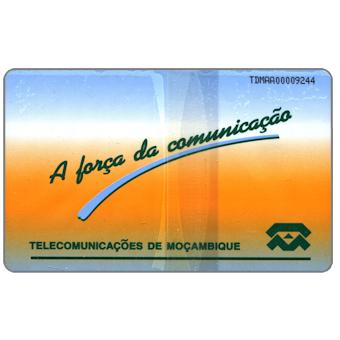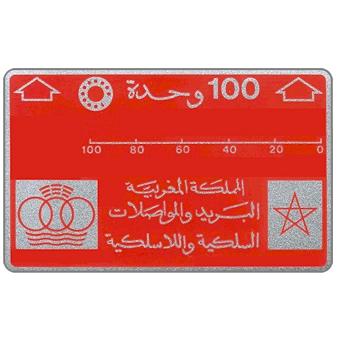There are very few cards issued in the Republic of the Congo. In 1992 a telephone system based on chip cards supplied by Schlumberger was installed and three cards were issued, with values of 25,…
Comores, 1992
The first and only telephone system used in the Comoros Islands is the one working with chip cards, which was supplied by Schlumberger together with the cards, two values that show the OPT logo on…
Central African Republic, 1987
The Landis & Gyr optical card system was used from 1987 to 1993, and later replaced by chip technology. The cards issued in that period were 6, always in pairs of two values, 60 and…
Cape Verde, 1990
Before moving to the chip system, Cape Verde used Landis & Gyr technology for the public telephone network, issuing, from 1990 to 1993, only 5 card models. Four of these were ordinary cards with the…
Gambia, 1990
The image of the Gamtel logo was used from 1990 to 1994 for different emissions that at first glance seem all the same. However, the first card used has a different design from all the…
Gabon, 1985
Gabon too, like other African countries, initially used the magnetic telephone cards produced by Autelca, before moving on to the chip system. The first issue was a series of two values: blue 3100F, with a…
Gemplus test cards: Africa
Several Validation or Manufacturing Acceptance Cards and Engineering Sample, commonly called by collectors Test cards, have been produced by Gemplus during the years, for almost all the countries where they installed a chip card phone…
Niger, 1988
The history of card-based telephony in this West African country is not very long. Phones provided by Landis & Gyr were installed in 1988, and the first cards were issued. These were the classic optical…
Mozambique, 1997
The first card of Mozambique is a chip card with a face value of 50.000 MT, with instructions on how to use it on the back. It was reprinted two years later, but the reprint…
Morocco, 1983
The first card used in Morocco is a Landis & Gyr of 100 units, issued back in 1983, and is very rare given that only 4,000 were produced. Strangely, after this issue no others followed…



